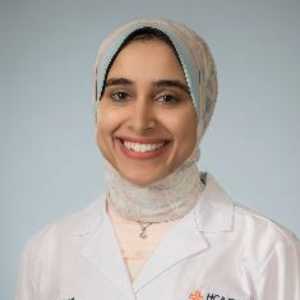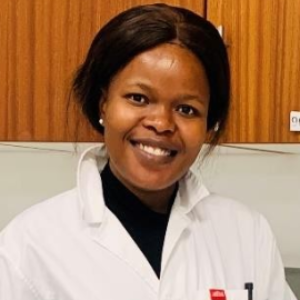Paul Michael Petersen, DTU Electro, Denmark
Human infectious diseases are among the most important problems in our healthcare system and today antibiotics are used for the treatment of a variety of diseases and infections. There is, however, increasing awareness and concern about antibiotic resistance, which prevents effec [....] » Read More



















































Title : Surveillance of healthcare-associated infections: New challenges for the next decade
Astagneau Pascal, Sorbonne University, France
Healthcare-associated infections (HAI) are one of the most frequent adverse events in hospitalized patients. Their potential outcomes could be fatal or severe and represent a significant disease burden. In addition, a part of HAI is due to multidrug-resistant organisms (MDRO), wh [....] » Read More
Title : Ongoing journey – targeting citrullinated histone H3 (CitH3) for early diagnosis and treatment of sepsis
Yongqing Li, University of Michigan Medical School, United States
Over the past decade, our research team has dedicated our efforts towards studying protein post-translational modifications with the goal of early diagnosis and treatment of sepsis. Our comprehensive and intensive research has culminated in the publication of approximately 40 man [....] » Read More
Title : Ozone and oxidation therapies a salvation for infection treatment
Robert Rowen, Private Medical Practice, United States
Medicine faces crisis with emerging “super bugs,” lethal viruses (Ebola), and stealth pathogens such as tick-borne infections. Thousands are dying worldwide of once easily treatable diseases. Ozone therapy, extensively studied, may be a valuable adjunctive or stand-al [....] » Read More
Title : Answers in hours – a prospective clinical study for rapid detection of pathogens and antibacterial resistance in surgical patients using oxford nanopore sequencing
Emma Whittle, Mayo Clinic, United States
Surgical site infections (SSI) are a major source of morbidity in patients undergoing pancreatic head resection. Infections are often caused by organisms detected in the bile duct, resulting in many institutions using prolonged prophylactic antibiotics that are later optimized ba [....] » Read More
Title : Disseminated histoplasmosis presenting as isolated acute liver injury: A case report
Rebecca Yao, Mayo Clinic, United States
The CNS, skin, and adrenal glands. We present a case of disseminated histoplasmosis in an immunocompromised host presenting with isolated acute liver injury. The various manifestations of disseminated histoplasmosis can involve nearly any organ system, including a 59-year-old [....] » Read More
Title : A Phase II, Randomized, Sham-Controlled Dose-Finding Study of the RD-X19 Treatment Device in Individuals with Mild-to-Moderate COVID-19
Jacob Kocher, EmitBio, United States
The EmitBio RD-X19 is a handheld, self-administered device that delivers doses of 425 nm visible light to the posterior oropharynx and surrounding tissues to serve as a potential new treatment option for outpatients with COVID-19. A Phase II, sham-controlled dose-finding study wa [....] » Read More
Title : In vitro characterization of the SARS-CoV-2 nucleocapsid protein
Babl Sabrina, University of Regensburg, Germany
Severe acute respiratory syndrome coronavirus 2 (SARS-CoV-2) is a positive-sense single-stranded RNA virus with a genome size of approximately 30 kilobases. The genome encodes non-structural proteins at its 5’ end and structural proteins at its 3’ end. Among the struc [....] » Read More
Title : Innate receptor PGLYRP2 is a functional sensor and hepatic scavenger for hepatitis B virus
Ming Shi, Harbin Institute of Technology, China
The stealth property of Hepatitis B virus (HBV) has been questioned. The hepatic immunocompetence and effective innate immune responses are necessary for spontaneous clearance of HBV infection, however, the underlying mechanisms remain unclear. Here we observed a negative correla [....] » Read More
Title : Effects of the natural compound on SARS-CoV-2 spike protein-mediated metabolic alteration in THP-1 cells explored by the 1H-NMR-based metabolomics approach
Gyaltsen Dakpa, National Chung Hsing University, Taiwan
A change in metabolism is one of the hallmarks of coronavirus disease 2019 (COVID-19) that cause severity and mortality. The mechanism of SARS-CoV-2 spike protein-mediated perturbations of metabolic pathways and modulation of antcin A, a steroid-like compound isolated from Taiwan [....] » Read More
Title : A case of SARS-CoV-2 induced guillain-Barre syndrome in a patient with concurrent bacterial infection while undergoing chemotherapy
William Song, Ochsner Clinic Foundation, United States
Guillain-Barre Syndrome (GBS) represents a spectrum of lmmune-mediated neuropathies that affect 1 to 2 in 100,000 people annually worldwide. Known triggers include infections, vaccinations, trauma, bone marrow transplants, systemic diseases, and medications. Recently, SARS-CoV-2 [....] » Read More
Title : A case of leprosy in North Florida
Austin Auyeung, Graduate Medical Education / HCA Florida North Florida Hospital, United States
Introduction The global prevalence of leprosy, also known as Hansen’s disease is <1/10 000, with the majority of new cases in India, Brazil and Indonesia. It can be broadly categorized as tuberculoid or lepromatous based on histopathological analysis. The USA continue [....] » Read More
Title : Diagnostic performance of real-time PCR kits for the detection SARS-CoV-2 from fecal swab in Covid-19 patient, Rajavithi hospital, Thailand
Suchada Suphanpayak, Rajavithi Hospital, Thailand
Coronavirus disease 2019 (COVID-19), caused by severe acute respiratory syndrome coronavirus 2 (SARS-CoV-2), is a pandemic disease that can manifest with fever, pneumonia and /or gastrointestinal symptoms with vomiting and diarrhea. Currently, the diagnosis is based on RT-PCR tec [....] » Read More
Title : Epidemiology of laboratory confirmed measles virus cases under the age of less than 5 in Ethiopia, 2017-2021
Esete Assefa Yigezu, Ethiopian Public Health Institute, Ethiopia
Background Measles is a highly contagious viral infection causing large outbreaks all over the world. Despite the availability of safe and cost effective vaccine, measles remained endemic with persistent periodic outbreaks in the Horn of Africa. The aim of this study is to chara [....] » Read More
Title : A randomized phase 3 clinical study to evaluate the efficacy and safety of SHR8008 (oteseconazole) vs. fluconazole in subjects with vulvovaginal candidiasis (VVC)
Stephen Brand, Mycovia Pharmaceuticals, United States
Background VIVJOA® (oteseconazole) is approved in the United States to reduce the incidence of recurrent vulvovaginal candidiasis (RVVC). A Phase 3 study was conducted in China by Jiangsu Hengrui Pharmaceuticals Co. Ltd. to evaluate the efficacy and safety of SHR8008 [....] » Read More
Title : Characterization of dengue virus serotype 1 and 2 infection in human dermal fibroblasts
Nicole Messere, Takeda Vaccines, United States
Dengue virus (DENV) is a mosquito-borne flavivirus with four antigenically distinct serotypes called DENV-1, DENV-2, DENV-3, and DENV-4. Many DENV infections are asymptomatic or lead to mild illness, but occasionally DENV infections can lead to severe disease, characterized by sh [....] » Read More
Title : Radiation proctitis with recurrent gastrointestinal bleed complicated by cytomegalovirus: A case report
Austin Auyeung, Graduate Medical Education / HCA Florida North Florida Hospital, United States
Abstract: Cytomegalovirus (CMV) is a well-known DNA virus of the human herpesvirus group that is known to cause a myriad of infections, more commonly in patients who are immunocompromised. Initial infections with this virus are frequently short-lived, presenting in the form a mi [....] » Read More
Title : The Activity of PHMB and other guanidino containing compounds against acanthamoeba
Dharanga Rumeshi Ratnayake, University of Wolverhampton, United Kingdom
In recent years, a rise in the number of contact lens users in the UK and worldwide coincided with an increased incidence of microbial keratitis. The aim of this study was to investigate the antimicrobial activities of polyhexamethylene guanidine (PHMG), polyaminopropyl biguanide [....] » Read More
Title : Exploring the impact of plectranthus amboinicus L. Extracts on antioxidant system and cell membrane integrity of P. aeruginosa PA01 and S. aureus NCTC8325
Sheeba Samuel Sawant, University of Wolverhampton, United Kingdom
Plectranthus amboinicus (Indian borage) has been extensively studied for its medicinal properties, which can be exploited to develop new antimicrobial therapeutics. The current study investigated the effect of Plectranthus amboinicus leaf extracts on the catalase a [....] » Read More
Title : Innate immune response to hepatitis B virus infection: Recognition and spontaneous viral clearance by hepatic sensor PGLYRP2
Haoran Ren, Harbin Institute of Technology, China
Background & Aims The stealth property of hepatitis B virus (HBV) has been challenged. The age-related hepatic immunocompetence and immune response leads to spontaneous clearance of HBV infection, however, the mechanisms underlying spontaneous clearance remain to be clarif [....] » Read More
Title : A case of meningoencephalitis due to dual infection with streptococcus pneumoniae and herpes simplex Virus 1
William Song, Ochsner Clinic Foundation, United States
Meningoencephalitis is a serious and life-threatening infection with high mortality rates worldwide. Streptococcus pneumoniae is one of the most common infectious agents causing bacterial meningoencephalitis. Herpes Simplex Virus 1 (HSV-1) causes viral meningoencephalit [....] » Read More
Title : Infectious diseases as a medical, social-economic and humanitarian problem
Huseynov Elchin Mammad, Azerbaijan Medical University, Azerbaijan
Due to the rapid and widespread distribution, high mortality in the acute period, and persistent residual effects leading to disability and side effects on pregnancy, and the fetus, infectious diseases are always under the close attention of society and all states. In addition, t [....] » Read More